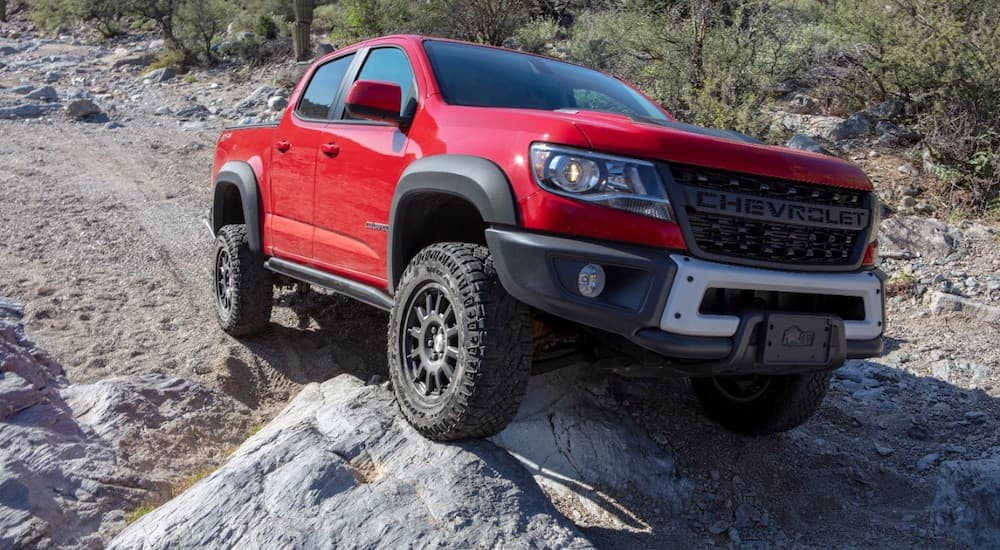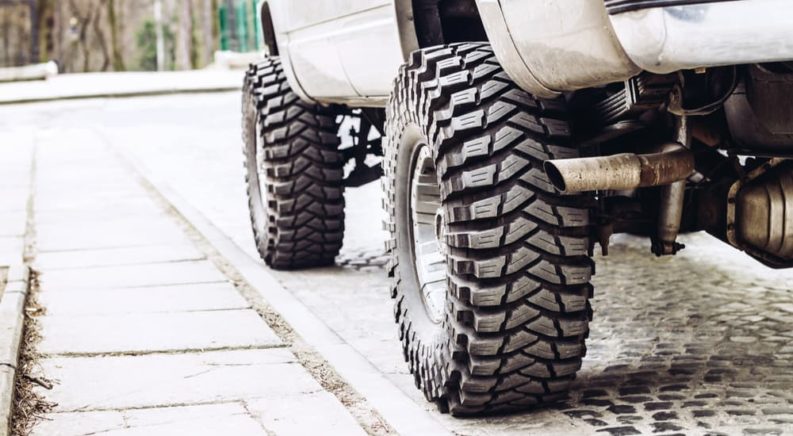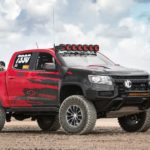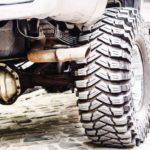There are more and more lifted trucks for sale these days, and the number of companies making quality lift kits is only going up. You can even buy lifted trucks in a variety of flavors straight from the factory. From basic packages like the Ram Rebel and Ford Tremor to off-road monsters like the Ram TRX and Ford Raptor, lifted trucks are here to stay.
But with the growing popularity of lifted trucks, you might be left wondering if one of these vehicles is right for you. To help you make up your mind about whether it is time to jump on the bandwagon, here are some of the major pros and cons of lifted trucks. Some of them are fairly obvious, and some of them you might not have thought of, but all of them should be considered before you head down to the dealer or press the buy now button on that lift kit you’ve been eyeing.
Pro #1 – Bigger Tires
The number one advantage of a lifted truck is that you can fit bigger tires. While you can fit larger tires than stock on a truck without a lift, you are generally not going to be able to go larger than 33-34 inches before the tires start rubbing against the body of the truck. However, with a lift kit, the sky’s the limit––literally. The only thing limiting tire size is the height of the lift, and lifted trucks with 35-inch, 37-inch, or even larger tires are not uncommon. In fact, there are even fully street-legal 58-inch mud-terrain tires available!
Bigger tires bring a lot of advantages when it comes to serious off-roading. They increase the ground clearance of the truck, they have thicker sidewalls to better absorb impacts on the trail, and they can crawl over obstacles more easily. There is a reason why every serious off-road model comes with upgraded rubber when compared to the base truck. In fact, bigger tires may just be the single most important upgrade you can make to a truck that you intend to take off-road.

Pro #2 – Ground Clearance
Adding bigger tires to a truck will increase the ground clearance, but so will adding a lift kit by itself. Combine both tires and a lift, and you will be able to confidently take on the trail without worrying about dinging your bumpers and skid plates. An important thing to remember when venturing into rough terrain is that ground clearance is more than simply the distance between the ground and the bottom of your truck––it also includes the approach, break-over, and departure angles, which can be even more important when it comes to navigating obstacles.
However, different types of lifts improve ground clearance differently. A body lift will improve the truck’s approach, breakover, and departure angles, but it will not improve basic ground clearance beyond whatever is gained by adding bigger tires. That is because a body lift leaves the axles the same distance from the ground and only lifts the body of the truck (hence the name). A suspension lift, on the other hand, will improve all aspects of ground clearance and give you a more capable off-road truck.
Pro #3 – Better Looks
A lift kit is an extremely functional upgrade when it comes to improving the off-road capability of your truck. However, we can’t ignore the fact that a lifted truck also just plain looks good. Even if you don’t spend your weekends up to the floorboards in mud, putting a lift kit on your truck is a great way to personalize your vehicle and stand out from the crowd. Pair it with some other basic mods like a set of aftermarket wheels, and your truck will go from run-of-the-mill to one-of-a-kind. Plus, you’ll never have any trouble finding your lifted truck in a crowded parking lot!
Con #1 – Expense
The number one disadvantage of a lifted truck is the expense. While you may be able to score a great deal on a used lifted truck, most factory lifted trucks cost considerably more than the base models. If you are interested in an aftermarket lift kit, the odds are that you will need to buy the kit yourself, which can cost anywhere from several hundred to several thousand dollars, depending on the type of kit. Plus, if you don’t have the tools and skills to install it yourself, you will then need to pay for the installation, which usually isn’t cheap. And that’s just the beginning of the added expense.
Not only do you have to pay for the cost of the lift kit, but lifted trucks also cost more to operate. A lifted truck will usually require a bit more maintenance than a stock truck, which can add a bit more to your annual expenses. And if you aren’t the DIY type, you may find that a mechanic who knows how to work on lifted trucks will charge more. Plus, the bigger tires that usually go hand in hand with a lift will also cost more than the factory tries. Finally, lifted trucks tend to be fuel hogs. The higher profile means more wind resistance, and that means more stops at the gas station.
Con #2 – Convenience
If the higher cost of owning a lifted truck isn’t a deterrent, you then have to deal with the inconvenience of driving a lifted truck. While a truck with a basic 2-inch lift isn’t going to be too different from a stock truck, once you start going higher, things can become a hassle. From the driver’s seat, you might enjoy the added height that lets you look down on traffic, but climbing in and out can quickly become more exercise than you were bargaining for––always remember to install side steps on a lifted truck! If you use your truck for truck stuff, like hauling sheets of plywood in the bed, you will quickly discover that having to lift and lower stuff those extra few inches, not to mention getting up into the bed, can leave you feeling sore at the end of the work day.
Even stuff that you might not have thought of can become inconvenient in a lifted truck. For instance, going to a drive-through or using a toll booth can be tricky when your truck is too tall for the window. If you are the DIY type, working on your truck can also become a challenge. While you might appreciate being able to get underneath the truck more easily, accessing the engine bay might now require a stepstool.
Con #3 – Handling
Trucks aren’t known for their sharp handling and low centers of gravity, to begin with, and a lifted truck only makes things worse. While the extra ride height is great for exploring the wilderness, you probably won’t appreciate it as much on the highway or when driving down a twisty back road. A properly installed lift kit will be completely safe at any reasonable speed, but there is no beating physics, and a taller vehicle is inherently less agile. If you spend a lot of time maneuvering through city traffic, commuting on the interstate, or in other situations where handling is important, then a lifted truck might not be the best choice for you.





